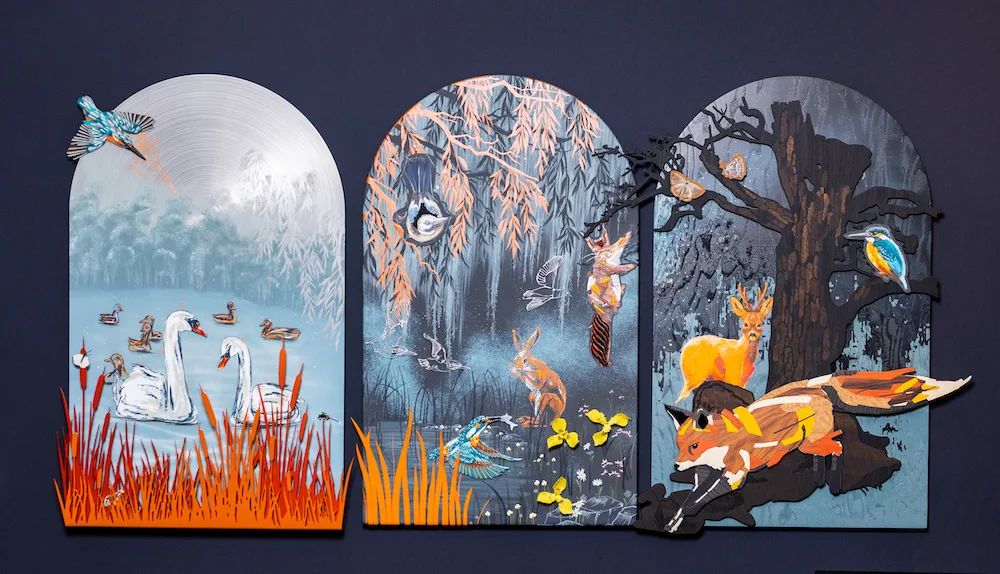In 1906, passionate and visionary seafarer Prince Albert I founded his eponymous foundation, of which the Oceanographic Institute is its flagship, receiving more than 650,000 visitors every year. For a century, the Foundation has been actively supporting the Ocean, promoting its protection, knowledge and love, bringing together key players from the worlds of politics, science, business and the general public.
Thanks to the support from the Oceanographic Museum of Monaco and the Maison de l’Océan in Paris, the Oceanographic Institute leads numerous projects on the national and international stages (symposiums, exhibitions, teaching programmes…) with the aim to promote sustainable management of the Ocean.
The museum in itself is world-famous for its remarkable architecture, its aquarium, and its exhibition events, making it a place of culture and dialogue, where experiences around ocean protection can be shared. An excellent example is their current exhibition, “Polar Mission”, an immersive experience at the heart of the Arctic and the Antarctic.
Take a peek:
The balance of Planet Earth is dependent on the good health of these extreme regions: a cause which has not escaped the attention of actress Mélanie Laurent, a fervent protector of the environment and ambassador of the show: “Through this exhibition, each one of us is invited to become not only a privileged observer of the unbelievable beauty of the polar worlds, but also an informed witness of their great fragility. For the future of the poles is also our future and that of generations to come,” she stresses.
Visitors can witness the mechanisms and the phenomena which are occurring at the extremities of the Earth, closely examine objects and documents from expeditions and research missions, as well as experience digital content alongside complementary immersive devices offering a 360° experience. Throughout their visit, with the help of their entrance ticket which takes the form of a press card, the visitor-reporter can activate extra content and, at the end of their visit, hand over their report using an interactive terminal.
“…The future of the poles foreshadows our own.”
- HSH Prince Albert II

They are also invited, if they so wish, to pledge their support to the Oceanographic Institute and the Prince Albert II of Monaco Foundation by actively backing measures in favour of the poles, most notably the creation of new Marine Protected Areas in the polar oceans. HSH Prince Albert II explains, “It is my hope that the emotion aroused by the beauty of these polar regions, together with the awareness of the vital role played by them on a global scale, will lead mankind to regard them with respect and caution, because one thing of which we are now certain is that the future of the poles foreshadows our own.”
The show is structured in five different spaces:
Space 1 – Meet the polar explorers from yesterday to today: Jean Malaurie, Jean-Louis Étienne or Frederik Paulsen as well as pioneers such as Jean-Baptiste Charcot or Matthew Henson. Here visitors come face to face with the great names of polar exploration and find out how their discoveries and their work contributed to a better knowledge of the poles.
Space 2 – Discover the world of the Inuit: In a scenography which reproduces an icy environment with its traditional igloo, the visitor becomes familiar with the Inuit way of life and its traditions. An immersion seen through the eyes of Jean Malaurie, who has devoted his life to the peoples of the Arctic. This space also testifies to the threats caused by climate change to populations constantly shaken by modernity.
Space 3 – Discover the secrets of the North and South Poles: Not only to understand how they function, but also to realise what tremendous upheavals are taking place there because of global warming. It offers visitors an opportunity to become fully aware of the differences between the poles and the crucial role played by them in the planet’s climate balance.

In this room, visitors can learn the differences between the North and South Poles. © P. Fitte
Space 4 – Embark on an immersive journey from the North to the South Pole: The wild, grandiose beauty of those icy lands comes to life in a never-before-seen immersive, interactive installation in the company of bears, seals, beluga whales, whales, sea elephants, killer whales and penguins. A wonderland which culminates in the dreamlike Aurora Borealis. With the help of a “voice-off”, this projection recalls the fragility of this ecosystem and the threats to these species.

The immersive installation in room 4 brings to life many of the majestic sea creatures of the poles. © P. Fitte
Space 5 – Understanding the challenges of polar scientific research: How much would we know about the poles without the involvement of science over the years? Three modules reveal how far knowledge of global warming and its consequences has come, how it is impacting biodiversity and, lastly, how it is impacting humans.

This final installation explains the challenges in polar research. © P. Fitte
“Polar Mission” is open daily (except the weekend of the Formula 1 Grand Prix and 25 December) from 10am to 6pm but for July and August where the opening hours are 9.30am to 8pm.
Admission rates: Adult ( 18 and over ) 18 € ◉ Student (valid card ) 12 € ◉ Child (4 to 17 years inclusive) 12 € ◉ Visitors with disabilities 9€
OCEANOGRAPHIC MUSEUM OF MONACO
Avenue Saint-Martin MC 98000 Monaco ◉ www.oceano.org
Words: Julia Pasarón








































